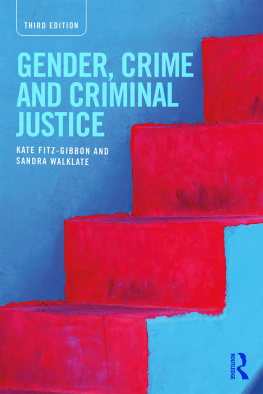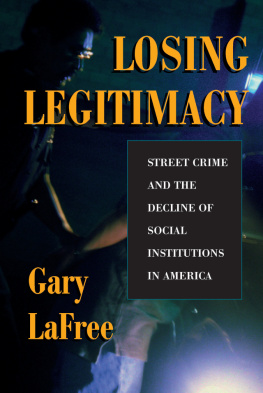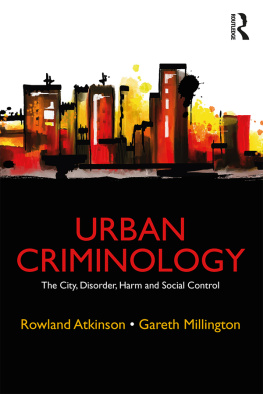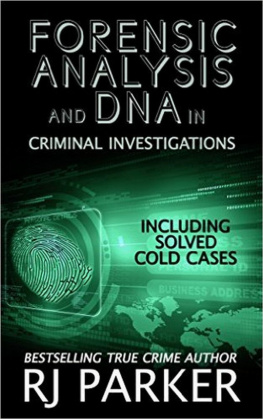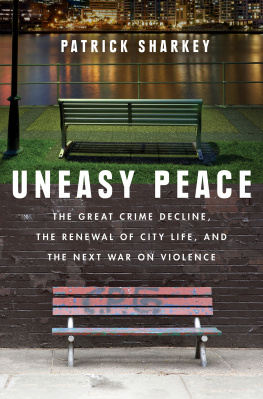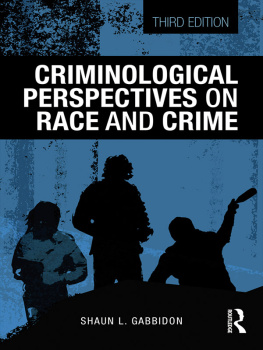NEW YORK UNIVERSITY PRESS
New York and London
www.nyupress.org
2008 by New York University
All rights reserved
Library of Congress Cataloging-in-Publication Data
Parker, Karen F.
Unequal crime decline : theorizing race, urban inequality,
and criminal violence / Karen F. Parker.
p. cm.
Includes bibliographical references and index.
ISBN13: 9780814767252 (cl : alk. paper)
ISBN10: 0814767257 (cl : alk. paper)
1. CrimeSociological aspectsUnited States. 2. Crime and raceUnited States.
3. Criminal statisticsUnited States. 4. Urban violenceUnited States.
5. Social indicatorsUnited States. 6. Violent crimesUnited States.
7. United StatesSocial conditions. 8. United StatesEconomic conditions. I. Title.
HV6789.P39 2008
364.2560973dc22 2008012216
New York University Press books are printed on acid-free paper, and their binding materials are chosen for strength and durability. We strive to use environmentally responsible suppliers and materials to the greatest extent possible in publishing our books.
Manufactured in the United States of America
c 10 9 8 7 6 5 4 3 2 1
Preface
I began this book when my research on racially disaggregated homicide was moving toward incorporating change models. Over the last few years I had published articles addressing the link between racial stratification and urban violence. Much of this work dealt with ways to integrate labor market characteristics with criminological theories when examining race-specific homicide rates, investigating the link between racial competition and intra- and interracial homicide rates, and exploring the relationship between specific structural characteristics, such as concentrated disadvantage, and racial variations in urban violence. Although I was examining in my work various aspects of the link between race, urban inequality, and violence, it was all based on cross-section designs. In the early 2000s, when research on the crime drop was dominating the literature, I realized that the link between racial stratification and urban violence would be informed by this debate. My first attempt to incorporate change occurred in 2002, when I received funds from the National Institute of Justice (NIJ) to examine the link between economic restructuring and disaggregated homicide rates in 1980 and 1990. Then, in 2004, I published a paper examining the influence of changes in labor market and economic characteristics on black and white homicide rates in U.S. cities from 1980 to 1990. From this process I learned two important things. First, examining the influence of concentrated disadvantage on race-specific homicide rates did not capture the larger labor market characteristics in U.S. cities. The constructs of concentrated disadvantage and labor market structures, albeit related, were tapping two different aspects of the local urban economy. And while concentrated disadvantage was receiving a good bit of attention in the scholarly literature on violence, the nature of labor markets was not. Thus I realized that more research was needed on the changes in specific labor markets that were displacing workers in the urban context, contributing to the spatial concentration of disadvantage and rates of violence.
The second matter that surfaced was that change models were able to pick up on something quite different from the cross-section designs that dominate the literature. In light of the crime drop of the 1990s, incorporating change or a dynamic view was essential in my work, particularly since my research interests centered around changes in labor demand (such as deindustrialization) and the emergence of a new economy based on racial variation in the urban homicide rate. So when a publisher contacted me about writing a book, I knew it was time to finally merge two important areas of researchthe relationship between racial inequality and urban violence, and the crime drop. This book, then, is my effort to investigate the relationship between race, urban inequality, and violence during times of dramatic change in both the urban economy and rates of city-level violence. It details how homicide rates have changed during the crime drop in U.S. cities but also documents trends before the crime drop. Key to the book is showing the differential patterns in homicide rates for race- and gender-specific groups over three decades and how the local urban economy is critical to understanding the unevenness in the homicide trends over time.
I extend my thanks to those who commented on individual chaptersGraham Ousey of the College of William and Mary, Don TomaskovicDevey of the University of MassachusettsAmherst, Ron Akers of the University of Florida, and Patricia McCall of North Carolina State Universityand others who were supportive of this project along the way. I have the deepest gratitude for Patty McCall, a good friend and collaborator, who spent a considerable amount of time and effort in generating a set of algorithms that was used to adjust the homicide counts for missing data. I also thank Robert Flewelling for his assistance with the adjustment procedure. I am grateful to all who helped shape this bookeven before it was a bookby collaborating with me on various papers and projects. In addition to Patty McCall, I think particularly of Scott Maggard and John MacDonald. I appreciate the University of Florida for sabbatical time that allowed me to focus on this book, and also my colleagues at the University of Delaware for their support. I thank my parents who shared their vacation home with me and my children while I worked on this book during the summer months. My mom, who was already a good grandmother, turned out to be a good researcher, too, as she spent many hours carefully checking calculations by hand and pouring over stacks of spread sheets containing supplemental homicide counts. I especially thank the most important people in my lifeAaron, my spouse, and my sons, Sam and Aidan, for their patience and love. I thank my editor, Ilene Kalish, at New York University (NYU) Press, and her assistants, for making this process an enjoyable one. Ilene was supportive of this project from the beginning, but her support continued to the very end, as she gave me the time I needed to complete the project. I also thank the anonymous NYU reviewers who provided feedback on earlier drafts of the book. To all of you I will always be grateful.
1
Introduction
The study of urban violence has taken an interesting turn. After the turbulent 1980s, when reports of violence, drugs, and economic recession ran daily in major newspapers and media outlets, the crime drop of the 1990s in U.S. cities baffled academicians and the public alike. To our surprise, the lethal 1980s was followed by safer 1990s. Researchers rushed to understand what could cause this dramatic rise and fall in homicide trends over time. Conservation crime control policies, such as rapid incarceration rates and greater police presence, receding drug markets, and changes in gun policies were some of the possible explanations quickly gaining attention.
Few scholars have looked locally into urban areas for answers. A considerable shift has occurred in the urban economy since the 1970s, as the industrial and economic core of cities was largely transformed. Emerging as the new economy, the latest economic transition to occur in urban areas has again changed the nature of work for most urban residents, many of whom were dislocated from earlier restructuring. Scholars have paid careful attention to the impact of deindus trialization on urban residents in the 1980s, including, to name only a few among notable others, Andersons (1999)


